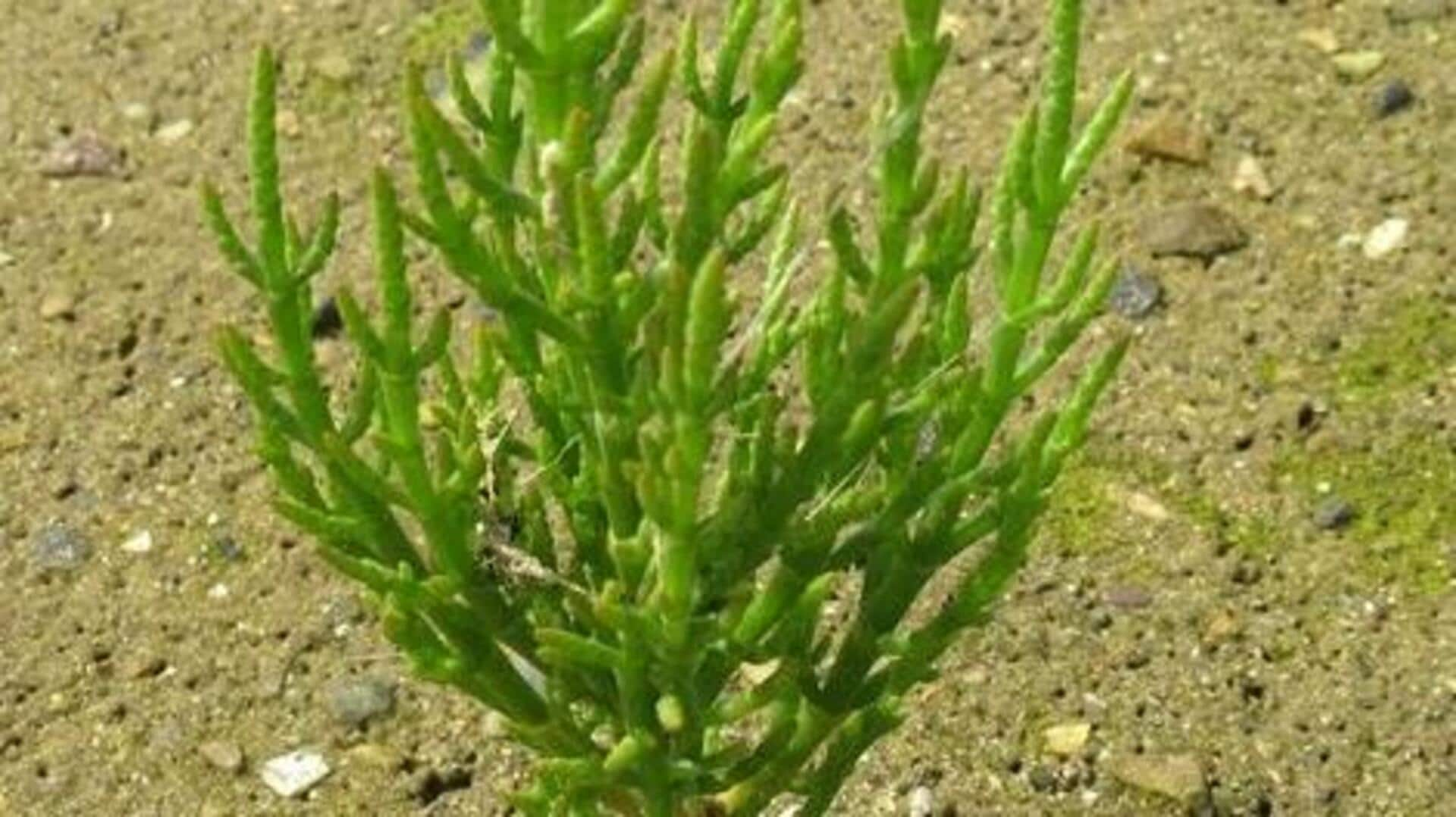
Salicornia: Discover the benefits of this sea vegetable
What's the story
Salicornia, also known as sea asparagus or sea beans, is an unusual vegetable that grows in salty conditions, such as coastal marshes. With its crisp texture and salty flavor, this sea vegetable is becoming increasingly popular, owing to its health benefits. Rich in essential nutrients and minerals, Salicornia provides several benefits making it an interesting addition to a healthy diet. Let's look at the benefits and uses of this marvelous plant.
Nutrients
Nutrient-rich profile
Salicornia has all the vitamins and minerals you need to stay healthy. It contains high amounts of vitamin A, vitamin C, calcium, magnesium, and iron. These nutrients are critical for maintaining immune function, bone health, and overall vitality. Salicornia also offers antioxidants which help fight oxidative stress in the body.
Health benefits
Potential health benefits
Eating salicornia can offer a number of health benefits, courtesy of its rich nutrient profile. Its high antioxidant content plays a key role in reducing inflammation and protecting cells from damage. Plus, the omega-3 fatty acids in salicornia are good for heart health. They can lower cholesterol levels and improve blood circulation, thus ensuring overall cardiovascular health.
Culinary uses
Culinary uses
Salicornia's unique taste makes it a versatile ingredient in various dishes. Whether eaten raw in salads or lightly sauteed as a side dish, salicornia can be enjoyed in many ways. Its natural saltiness adds flavor without the need for additional seasoning. This makes it a great addition to gourmet recipes, with chefs increasingly incorporating salicornia for its distinctive taste and nutritional value.
Environmentally friendly
Environmental impact
Another reason why growing salicornia has a minimal environmental impact compared to traditional crops is that it grows on saline water, which is unsuitable for most plants. This makes it an attractive option for sustainable agriculture practices that aim to conserve freshwater resources while producing nutritious food sources.